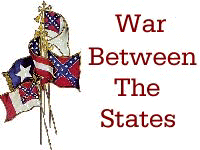| |
|
|
|
Meanwhile, Gen. William H. French's division of Sumner's corps moved up to support Sedgwick but veered south into Confederates under Gen. D. H. Hill posted along an old sunken road separating the Roulette and Piper famrs. For nearly 4 hours, from 9:30 a.m. to 1 p.m., bitter fighting raged along this road (afterwards known as Bloody Lane) as French, supported by Gen. Israel B. Richardson's division, also of Sumner's corps, sought to drive the southerners back. Confusion and sheer exhaustion finally ended the battle here and in the northern part of the field generally.
|
Click picture for larger version

For nearly 4 hours, Union and Confederate infantry contested this sunken country
road, resulting in over 5,000 casualities. Thus the name "Bloody Lane"
|
Click picture for larger version

The fighting here was a key factor in McClellan's failure at Antietam.
Called Burnside Bridge after the Union general whose troops
were held off most of the day by a few hundred Georgia riflemen,
it is the battlefield's best-known landmark.
|
Southeast of town, Union Gen. Ambrose. E. Burnside's troops had been trying to cross a bridge over Antietam Creek since 9:30 a.m. Some 400 Georgians had driven them back each time. At 1 p.m. the Federals finally crossed the bridge (now known as Burnside Bridge) and, after a 2-hour delay to reform their lines, advanced up the slope beyond. By late afternoon they had driven the Georgians back almost to Sharpsburg, threatening to cut off the line of retreat for Lee's decimated Confederates. Then about 4 p.m. Gen. A.P. Hill's division, left behind by Jackson at Harpers Ferry to salvage the captured Federal property, arrived on the field and immediately entered the fight. Burnside's troops were driven back to the heights near the bridge they had earlier taken. The Battle of Antietam was over. The next day Lee began withdrawing his army across the Potomac River.
|
|
More men were killed or wounded at Antietam on September 17, 1862, than on any other single day of the Civil War. Federal losses were 12,410, Confederate losses 10,700. Although neither side gained a decisive victory, Lee's failure to carry the war effort into the North caused Great Brittain to postpone recognition of the Confederate government. The battle also gave President Abraham Lincoln the opportunity to issue the Emancipation Proclamation, which, on January 1, 1863, declared free all slaves in State still in rebellion against the United States. Now the war had a dual purpose: to preserve the Union and end slavery.
|
Click picture for larger version

Dunker Church. This was the focal point of repeated clashes as both armies sought to accupy and hold the high ground around it. Leveled by a storm in 1921, the church was rebuilt in 1962.
|
| Home
|
|




|





